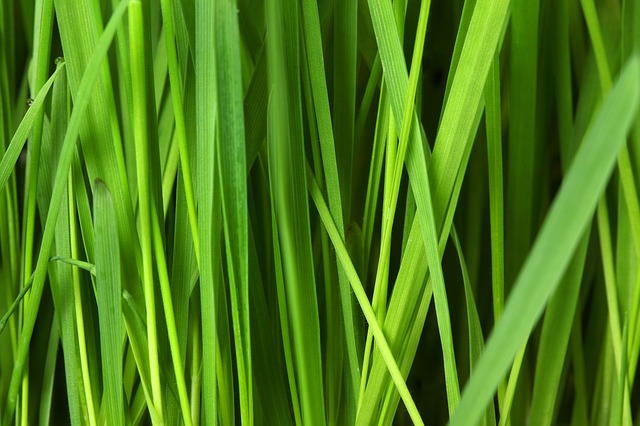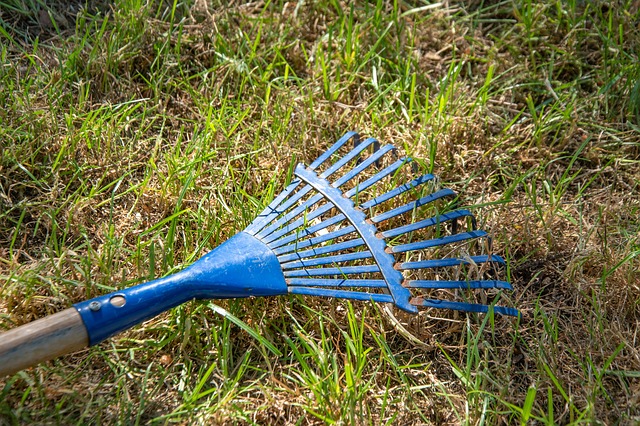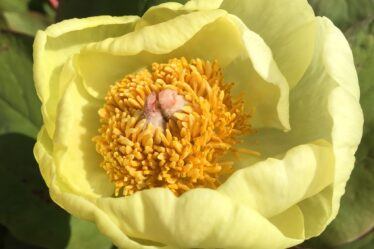
Autumn Lawn Maintenance in 5 Easy Steps
Is your grass looking tired, patchy and generally in a state of disrepair? Don’t despair follow my autumn lawn maintenance in 5 easy steps and you will soon have your lawn ship shape again with an enviable bowling green quality to it.
Clients often ask me how to improve and care for their lawns. It really is very straightforward to have a lush, green and healthy lawn
We like to enjoy our gardens, including our lawns and so we should, but all this use and movement causes some damage but rest assured it is all repairable and treatable.
Good lawn management is paramount to help keep turf from becoming compacted and damaged after water logging or drought conditions and Autumn is the best time to tackle those maintenance jobs and to prepare your lawn for next spring.
Grass still grows strong during September, October and in warm, wet areas in November too. So, autumn is the best time to treat your lawn to some tender, loving care as the soil is still warm enough for the grass to respond to treatment. If you leave it any later in the season the temperatures decrease, the grass stops growing and will take longer to recover.
Autumn Lawn Maintenance
Is It Bad For Your Lawn Not To Rake Leaves?
It has been for many years common practice to remove fallen leaves from lawns.
The main reason being was to tidy up and make the grass look a bit better throughout autumn.
If there are areas where a large amount of leaves accumulate then I would still recommend that they are cleared either by raking or using a leaf blower. A deep wet, soggy layer of leaves just makes a mess and can smother a lawn which stops air getting to the soil.
Collected leaves can be composted, mulched, or left elsewhere in the garden for wildlife to use over winter as shelter, food and nesting.
However, if the leaves are just a thin layer then best practice is to mow over them then leave the resulting mulch on the lawn. This will help to add nutrients to the soil which feeds your lawn naturally and keeps it aerated.
Check out my product review to find out what is the best leaf blower to buy.
For more information on the benefits of Autumn leaves read here.

Scarifying Lawns
I have spoken about scarifying in a previous blog.
Scarifying is done in order to remove thatch, which is dead grass, moss and debris from your lawn. Scarifying lawns improves soil by aerating it, which in turn improves drainage and allows fertiliser to penetrate through to the grass roots.
Depending on how rigorously you scarify the lawn you may well get bare patches but the grass will grow back stronger as there will be fewer weeds or moss to contend with. Late summer to mid Autumn is the optimum time to re-seed any areas that require it. The soil and weather is warm enough for seeds to germinate.
Use a spring-tined rake or a powered scarifier such as the Bosch AVR 1100 Verticitter Scarifyer and Lawn Raker
Using a rake on smaller lawns is actually really effective abdominal exercise which I can certainly attest to.
Have I said before that gardening is good for you? Great exercise.

Aerating Lawns
Turf can become compacted from drought conditions and from water-logging and from all the use and abuse it gets through our general use of our lawned areas in spring and summer. Who has children or pets playing on the lawn all summer? Unfortunately this causes some damage, our lawns and gardens are there to be enjoyed, some damage is inevitable
Constant use can cause damage so we owe it to our lawn to start to repair and care for it so that it can recover and look it best for next season.
Aerating lawns allows for movement of air and water at grass root level. Which helps to improve your lawns health and quality.
Aerating should be done about every couple of years depending on the level of traffic and use that your lawn receives.
Spike small areas with a garden fork, space the holes approximately 4-6 inches apart and as deep. Hand held, push aerators and motorised aerators are available too and make easy work of this task on larger lawns.
After the aerating is complete sweep up the plugs and sweep or rake some top dressing into the holes.
See what I mean about good exercise, I’m saving you gym fees here.
Topdressing Lawns
Topdressing improves texture, water and air penetration, thereby improving the overall health of the roots
The RHS’s recommendation is three parts sandy loam with six parts sharp sand and one part compost. 2 to 3 kg per square meter.
Work it in with the back of a rake. Sorry but there isn’t a power tool for doing this, manual raking is the thing to do.
Levelling the Lawn
Many lawns acquire, with use lumps and bumps, dips and hollows.
With a bit of effort and care we can level them all out and have the lawn flat as a pancake in no time at all.
To correct the lumpy areas, cut through the turf with your edging iron if you have one, or a spade and pull it back to reveal the soil beneath. Fork over the soil and remove excess soil, also remove any large lumps of earth and stones. Replace the layer of turf, press the edges together to help it start to grow and knit back together.
To fill in any dips, again cut through the turf and peel it back, then fill in the dip/hollow with topsoil as required and the roll the turf back over it.
Water the repaired areas thoroughly to help the turf recover quickly and healthily.
Conclusion
If you have lawn damage and wish to improve and repair it, then I hope this short “How to do” post has helped.
Follow my tips and advice and you will soon have a great looking lawn again. For more information on what jobs to do in the garden in October click here.
Read here for more “How to do” articles
Please share with friends and family and on social media.
Any question or views can be added to the comments box below and I will reply.
Happy Gardening




